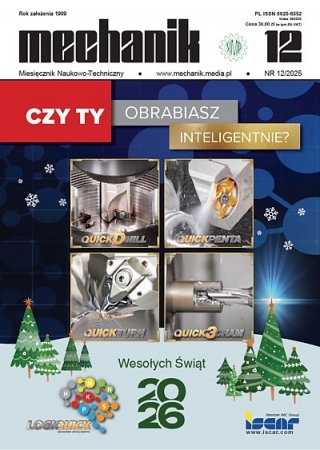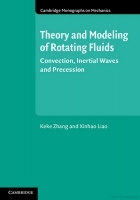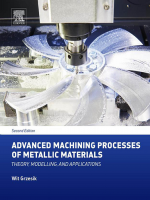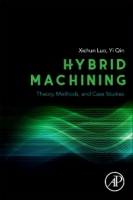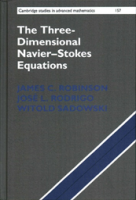The process of dynamic selection of metallic materials and their consolidation
Proces dynamicznej selekcji materiałów metalicznych wraz z ich konsolidacją *
Author: Paweł Bałon, Edward Rejman, Bartłomiej Kiełbasa, Robert Smusz, Andrzej Szęszoł, Mirosław Kloc
Mechanik nr 04/2024 - Obróbka skrawaniem
ABSTRACT: In the process of machining, e.g. machining, chips are created and recycled. In many cases, chip briquetting is a solution with many advantages: it reduces their volume by up to 50%, is more efficient in terms of their management and transport, enables the recovery of oils and coolants, and also generates low energy and volume losses during melting in the steelworks. Higher waste density, lower transport costs and reduced humidity levels increase the sales prices of metal briquettes. Moreover, the briquetted material is less susceptible to the influence of weather conditions – its oxidation is reduced. This results in an increase in the quality of the material in the molten phase. An additional advantage is the ability to easily load and place the briquettes directly in the melting furnace, which eliminates the need to remove residual machining coolants. In the article, the authors undertook research related to the consolidation of chips in order to obtain their moisture content below 3%.
KEYWORDS: pressing steel chips, pressing aluminum chips, briquetting, consolidation
STRESZCZENIE: W procesie obróbki ubytkowej, np. skrawaniem, powstają wióry, które poddaje się recyklingowi. W wielu przypadkach brykietowanie wiórów jest rozwiązaniem o wielu zaletach: redukuje ich objętość do 50%, jest bardziej wydajne pod względem ich zagospodarowania i transportu, umożliwia odzyskiwanie olejów płynów chłodzących, a także generuje niskie straty energetyczne i objętościowe podczas topienia w hucie. Większa gęstość odpadu, niższe koszty transportu oraz zmniejszenie poziomu wilgotności wpływają na wzrost cen sprzedażowych brykietu metalowego. Ponadto zbrykietowany materiał mniej poddaje się wpływowi warunków atmosferycznych – zmniejsza się jego utlenianie. Skutkuje to wzrostem jakości materiału w fazie stopionej. Dodatkową zaletą jest możliwość łatwego załadowania i umieszczenia brykietu bezpośrednio w piecu topielnym, co eliminuje konieczność przeprowadzania procesów usuwania pozostałości chłodziw obróbkowych. W artykule autorzy podjęli tematykę badawczą związaną z konsolidacją wiórów i uzyskali ich zawilgocenie poniżej 3%.
SŁOWA KLUCZOWE: prasowanie wiórów stalowych, prasowanie wiórów aluminiowych, brykietowanie, konsolidacja
BIBLIOGRAFIA / BIBLIOGRAPHY:
[1] Bałon P., Rejman E., Smusz R., Szostak J., Kiełbasa B. “Implementation of high speed machining in thin-walled aircraft integral elements”. Open Engineering. 8, 1 (2018): 162–169, https://doi.org/10.1515/eng-2018-0021.
[2] Bałon P., Rejman E., Smusz R., Szostak J., Kiełbasa B. “Highspeed milling in thin-walled aircraft structures”. Applied Computer Science. 14, 2 (2018): 82–95, https://doi.org/10.23743/acs-2018-15.
[3] Bałon P., Rejman E., Kiełbasa B., Smusz R. “Using HSMtechnology in machining of thin-walled aircraft structures”. Acta Mechanica et Automatica. 16, 1 (2022): 27–33, https://doi.org/10.2478/ama-2022-0004.
[4] Korbel A., Bochniak W., Śliwa R., Ostachowski P., Łago-da M., Kusion Z., Trzebuniak B. „Niskotemperaturowa konsolidacja wiórów z trudno odkształcalnych stopów alu-minium”. Obróbka Plastyczna Metali. XXVII, 2 (2016):133–151.
[5] Demianiuk L., Hejft R. „Nowe rozwiązania konstrukcyjnebrykieciarek do trocin”. Przegląd Mechaniczny. 30–33, 1 (2002).
[6] Rozporządzenie Rady Unii Europejskiej Nr 333/2011 ustanawiające kryteria, kiedy pewne rodzaje złomu przestają być odpadami na mocy dyrektywy Parlamentu Europejskiego i Rady 2008/98/WE.
[7] PN-85/H-15000: Złom stalowy.
[8] PN-91/M-15715/04: Złom aluminium i jego stopów.
[9] Norma Zakładowa ZM-CMCP-Z – 1/2021 – Złom stalowywsadowy. CMC Poland Sp. z o.o.
[10] „Moisture Analysis, Fundamentals and Applicatios Mettler”. Toledo (2023).
[11] „Warunki odbioru złomu wsadowego w Arcelor Mittal Poland S.A.”. Warunki WT/03.3/Z.002, 30.03.2022
DOI: https://doi.org/10.17814/mechanik.2024.4.7
* Artykuł recenzowany



